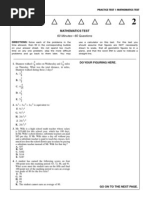Introduction To Robotics Oussama Khatib Pdf To Excel
Research My research takes place in close cooperation with (super expert in programming the most difficult robot tasks), (my main liason with industrial projects), (former supervisor and co-owner of most of my “robot skills” R&D), (for solvers of constrained optimization problems), (main liason for non-robotics control), (core co-creator of system-of-systems robot skills), (main liason for shared control and industrial robot vision), (main liason for autonomous shipping), (main liason to the mechatronics industry in Flanders), and a manageably small set of and. But, please, don't blame them for my mistakes or confusions. I focus on integrating, into robots, as much formally represented as possible (the of the mythical “robotics ), especially for realtime algorithms and other software close to the hardware, the controller(s) and the sensor(s). Research question 1 How can knowledge-driven (“ ”) robot programming, perception and learning be made more realtime, while still taking into account more prior knowledge about the tasks, the robots, the objects they interact with, and the environment they have to survive in? Preliminary answer: by exploiting to model all, and to embed their runtime exploitation by means of and. Summary of results: the information and software architectures for the motion stack and the perception stack of robotics systems-of-systems are extremely similar, composable and formally verifiable.
The “knowledge” is represented as constraints between parameters in the Bayesian model. The traditional Bayesian model is extended to be hierarchical, in the sense that it must be possible to let different sets of knowledge constraints apply to different parts of the Bayesian model; this is a pragmatic way to introduce the all-important concept of “context”. Research question 2 What are the formal (DSLs) that can make the knowledge representation (and hence the programming of robots) a lot more easy? And, at the same time, a lot more semantically consistent, and (hence!) deterministic, and (hence? Fate Hollow Ataraxia Pc Iso Torrent. ) verifiable, and (hence!), and (hence?). Preliminary answer: by creating lots of small ontologies, with their Primitives, Relationships, Constraints and Tolerances encoded in languages such as, that support N-ary relationships and context-specific hierarchical composition as first-class citizens. Summary of results: I was a key creator of the BRICS Component Model, and of its successor the, which is a scientific paradigm to support the design, development, deployment and runtime adaptation of complex robotics and other ) systems. Research question 3 Which new design paradigm can provide cheap, light and safe (hence, “lousy”) robot hardware?

Introduction to Robotics, Marc Toussaint—February 4, 2014. An advanced text book on planning is this: Steven M. LaValle: Planning Al- gorithms. Cambridge University. Online: 1:14. Online resources. • VideoLecture by Oussama Khatib:. Tions of Robotics' in Bruno Siciliano and Oussama Khatib (eds), Handbook of Robotics (Springer, 2008). Luciano Floridi, Philosophy and Computing: An Introduction (Routledge, Kindle edn 1999) pos 2862 ff, and. Semantics; on the other hand, they excel at syntactics.40 A machine could be considered a moral.
This is a necessary evolution before robotics platforms can become a commodity. Preliminary answer: confidential, for now.
Research question 4 What is the essential and minimal structure to model the software aspects of robotic systems? How should robot control software be developed in the future? What architectural patterns can help us cope with the exploding complexity in knowledge, task variations, and distribution over several sub-systems? Preliminary answers: (i) by systematically applying a small set of system-of-systems composition patterns, (ii) by clean separation of the information, software and hardware architectures, and (iii) by generating the robots' motions more and more by preview and precognitive control. Preview control is the “information architectural” model behind (MPC) (and its estimation dual ); it adds a symbolic/modelling part to the numerical robot state, to represent the task-level aspects of intentions, progress and benefits of an ongoing robot action, to allow making decisions about altering that control on the basis of what the future is expected to bring. This information could be obtained as a side-effect of the control-level optimizations done in an MPC, by using finite horizons over time and state space.
The Sims 2 Apartment Life Download Pc Gratis. The MPC state in itself can already be “hybrid”, in that it contains discrete as well as continuous parts; the symbolic part is involved in a “” which is solved by and extends the MPC with a of knowledge relationships (which is the symbolic equivalent of a “finite horizon”). When the robot itself is able to fill in the symbolic information in the preview control model, we call this control mode pre-cognitive control. We're not there yet Deprecated answer: I started the project in 2001, with later “spin-off” projects and.
My first PhD student on this material, Peter Soetens, started his spin-off company in 2010, on the basis of his unique expertise with the Orocos code. Research question 5 What is the essential and minimal structure to model the functional aspects of robotic systems, such that • all entities, relations, and constraints are given a unique and semantically unambiguous place. • no model must ever be changed when composed into a larger system, except for some configuration of parameters in the model. • all physical constraints can be covered: energy sources, power transformation to the mechanical domain, mechanical transmmissions, joints, kinematic chains. • all artificial constraints can be covered: tasks for individual robots as well as (cooperative) systems of robots. Best-practice answer, after three decades of practicing, and just for the functional aspects.